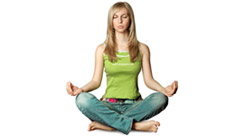What is Pranayama?
“The regulation of the breath through certain techniques and exercises”.
‘Prana’ refers to the universal life force and ‘ayama’ means to regulate or lengthen. Prana is the vital energy needed by our physical and subtle layers, without which the body would perish. It is what keeps us alive. Pranayama is the control of prana through the breath. These techniques rely on breathing through the nostrils.
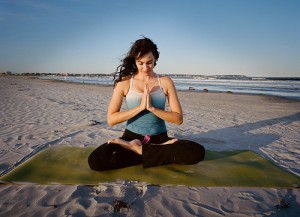
“Pranayama is control of Breath”. “Prana” is Breath or vital energy in the body. On subtle levels prana represents the pranic energy responsible for life or life force, and “ayama” means control. So Pranayama is “Control of Breath”.
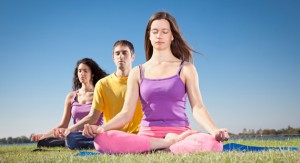
Pranayama is the perfect control of the life-currents through control of breath, and is the process by which we understand the secret of prana and manipulate it. You can hardly make any spiritual progress without the practice of pranayama. One who has grasped this prana has grasped the very core of cosmic life and activity. Through various exercises and training in pranayama the yogi tries to realize in this little body the whole of cosmic life, and attain perfection.
Prāṇāyāma (Sanskrit: प्राणायाम prāṇāyāma) is a Sanskrit word alternatively translated as “extension of the prāṇa (breath or life force)” or “breath control.” The word is composed from two Sanskrit words: prana meaning life force (noted particularly as the breath), and either yama (to restrain or control the prana, implying a set of breathing techniques where the breath is intentionally altered in order to produce specific results) or the negative form ayāma, meaning to extend or draw out (as in extension of the life force). It is a yogic discipline with origins in ancient India.
Read more about pranayama
Read more about pranayama
Breath is a physical aspect or external manifestation of prana, the vital force, and thus pranayama begins with the regulation of the breath. Breath, like electricity, is gross prana, while prana itself is subtle. By controlling the breath you can control the prana – just as you can control the other wheels by controlling or stopping the fly wheel of a diesel engine, and just as you can control the hairspring, cog wheels and the main spring of a watch by controlling the minute hand. Control of breath is achieved through manipulation of the lungs and the breathing process. Prana flows through thousands of subtle energy channels called ‘nadis’ and energy centers called ‘chakras’. The quantity and quality of prana and the way it flows through the nadis and chakras determines one’s state of mind.
If the Prana level is high and its flow is continuous, smooth and steady, the mind remains calm, positive and enthusiastic. However, due to lack of knowledge and attention to one’s breath, the nadis and chakras in the average person may be partially or fully blocked leading to jerky and broken flow. As a result one experiences increased worries, fear, uncertainty, tensions, conflict and other negative qualities. Pranayama are breathing exercises which clear the physical and emotional obstacles in our body to free the breath and so the flow of prana – life energy. Through a regular and sustained practice of pranayama you can supercharge your whole body! The way that we move, think, act and especially breathe contributes to the flow and vitality of prana – the universal energy that runs through us and everything around us.
Why is the breath so important?
It’s the first thing and last thing we do in our lives. The one constant thing we all have. Without breath there is no life!
Daily stress, tensions and physical habits can create physical and energetic obstacles in our bodies. Without even noticing it our breathing can become gradually more shallow or stilted, we develop unconscious breathing patterns restricting the flow of breath and prana.

When we work on the freeing the breath through pranayama (breathing exercises) we are also working on letting the life energy flow through the body. It has the effect of energizing; relaxing and healing the body, letting everything fall into place. Literally it is an increase and balance of life energy in your system.
Pranayama – why it actually works!
Pranayama is a great yoga exercise which can relieve stress and has other health benefits also.
Ever felt like the weight of the whole world rests on your shoulders? Well, there is a method to quieten your mind and get rid of that stress – just breathe. According to ancient Indian scriptures, breathing is one of the best things you can do to help your body recover, repair and function better. Also known as Pranayama, it not only good in theory it actually works. Here is why.
Prana: The breath of life
The ancient Indian system of yoga identified the power of breath and strove to maximize its efficiency by developing special breathing techniques. The ancient yogis discovered prana as the universal life force or energy which distinguishes the living from the dead. We get prana from food, rest, breath and by being in a calm, happy frame of mind. However, the most important source of prana is breath – when our breath stops, we die.

It was discovered that the quantity and quality of prana and the way it flows through the nadis (subtle energy channels) determines one’s state of mind.
Due to lack of attention, the energy channels in the average person may be partially blocked, making the flow of prana, broken and jerky. This results in increased worry, fear, uncertainty, conflict, tension and other negative qualities. When the prana level is high and its flow is continuous, smooth and steady, then the mind is calm, positive and enthusiastic.
As Sri Sri Ravi Shankar says ‘Breath is the link between the body and mind. If the mind is a kite the breath is the thread. The longer the thread, the higher the kite can go.’ (Read: Beat insomnia with yoga)
Breathe out stress, breathe in joy
Did you know that we can throw out 90 percent of the toxins from our body by breathing correctly? We can learn the art of breathing right by observing new born babies. Have you seen their stomach gently rising and falling as they breathe in and breathe out? Breath is our vital source of energy. The key to healthy and happy living lies in right breathing. When we attend to our breath, it can heal us from all worries and anxieties.
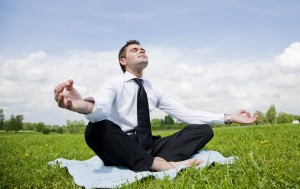
At a conference in Germany, Sri Sri Ravi Shankar explained the connect between breath and emotions, ‘Our breath is linked to our emotions. For every emotion, there is a particular rhythm in the breath. So, when you cannot directly harness your emotions, with the help of breath you can do that. If you are in theater, you would know that a director asks you to breathe faster when you have to show anger. If you have to show a serene scene, director would tell you to breathe softer and slower. If we understand the rhythm of our breath, we are able to have a say over our mind, we can win over any negative emotions like anger, jealousy, greed, and we are able to smile more from our heart.’
Breath right:
Most of us breathe from the chest – such shallow breathing sends a signal to the brain that all is not well – we are stressed. Alternatively, breathing from the abdomen boosts respiration, ensures a rich supply of oxygen to the brain and signals that all is well.
Observe your breath and note if it is deep or shallow. (Read: Try these yoga poses to improve digestion)
Breathing techniques for various ailments
You can practice these breathing techniques at any time of the day whenever your stomach is empty.
- Is your mind buzzing with activity? Can’t stop thinking about what someone said about you? Find a quiet corner and try the Bee breath (Bhramari pranayama) to apply brakes in the buzzing mind. This breathing technique is a boon for those with hypertension.
- Among the breathing techniques, Kapal Bhati (Skull Shining breath) is considered the most important and effective for detoxifying the body and clearing the energy channels.
- Low energy levels? Three rounds of Bhastrika pranayama (Bellow breath) will get your energy levels soaring!
- Can’t concentrate on the task at hand? Try nine rounds of Nadi Shodhan pranayama followed by a short 10-minute meditation. Nadi Shodhan pranayama calms and centres the mind by bringing into harmony the left and right hemispheres of the brain which correlate to the logical and emotional sides of our personality.
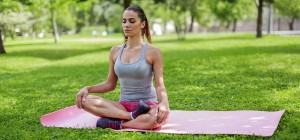
Benefits of pranayamas
- Enhances the quantity and quality of life force
- Clears blocked energy channels
- Harmonizes the body, mind and spirit
- Boosts the immune system
- Rejuvenates the body and mind
- Slows down the ageing process
 Astrologer Vinayak Bhaatt | Authentic Astrologer In India
Astrologer Vinayak Bhaatt | Authentic Astrologer In India


